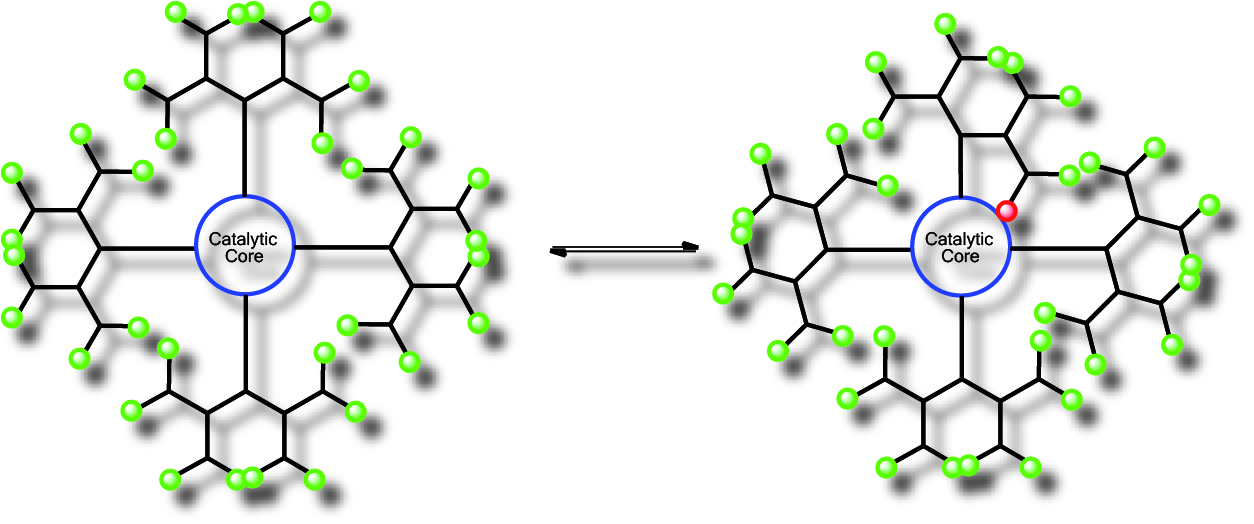
Catalytic Dendrimers for Olefin Metathesis
Revannath Sutar, Department of Natural Sciences, The Open University of Israel, Ra`anana, Israel
Dendrimers, highly branched macromolecules, consist of three major components, a core, branches and terminal groups. These molecules have many special properties and applications; contrary to common beliefs, many exhibit an intense dynamic behaviour of termini, allowing their distribution throughout the dendritic volume. Thus, in high generations of Fréchet type dendrimers, the terminal groups fold back, allowing their access close to the core as well as periphery. Though dendrimer dynamics have been studied both theoretically and experimentally, only recently the distinct conformational behaviour of catalytic ‘chameleon’ dendrimers has been used to promote selective reactions.1 In continuation of our research in the development of olefin metathesis catalysts, we were interested in the development of functional catalytic dendrimers for selective metathesis reactions by taking advantage of dendrimer dynamics. Herein we report our preliminary results in the synthesis of dendrimers with N-Heterocyclic Carbene cores and with reversible chemistry in their termini and the metathesis catalysts produced thereof.

1. (a) Shema, M.; Aharoni, A.; Iliashevsky, O.; and Lemcoff, N.G., Towards Control of Dendrimer Properties by Reversible Exchange of Termini: Synthesis and Characterization of Diverse Porphyrin Dendrimers, Isr. J. Chem., 2009, 49, 1-8.
(b) Shema-Mizrachi, M.; Pavan, G. M.; Levin, E; Danani,A; Lemcoff, N.G., Catalytic Chameleon Dendrimers, J. Am. Chem. Soc., 2011, 133, 14359-14367.
Organized & Produced by:

POB 4043, Ness Ziona 70400, Israel
Tel.: +972-8-9313070, Fax: +972-8-9313071
Site: www.bioforum.co.il,
E-mail: bioforum@bioforum.co.il